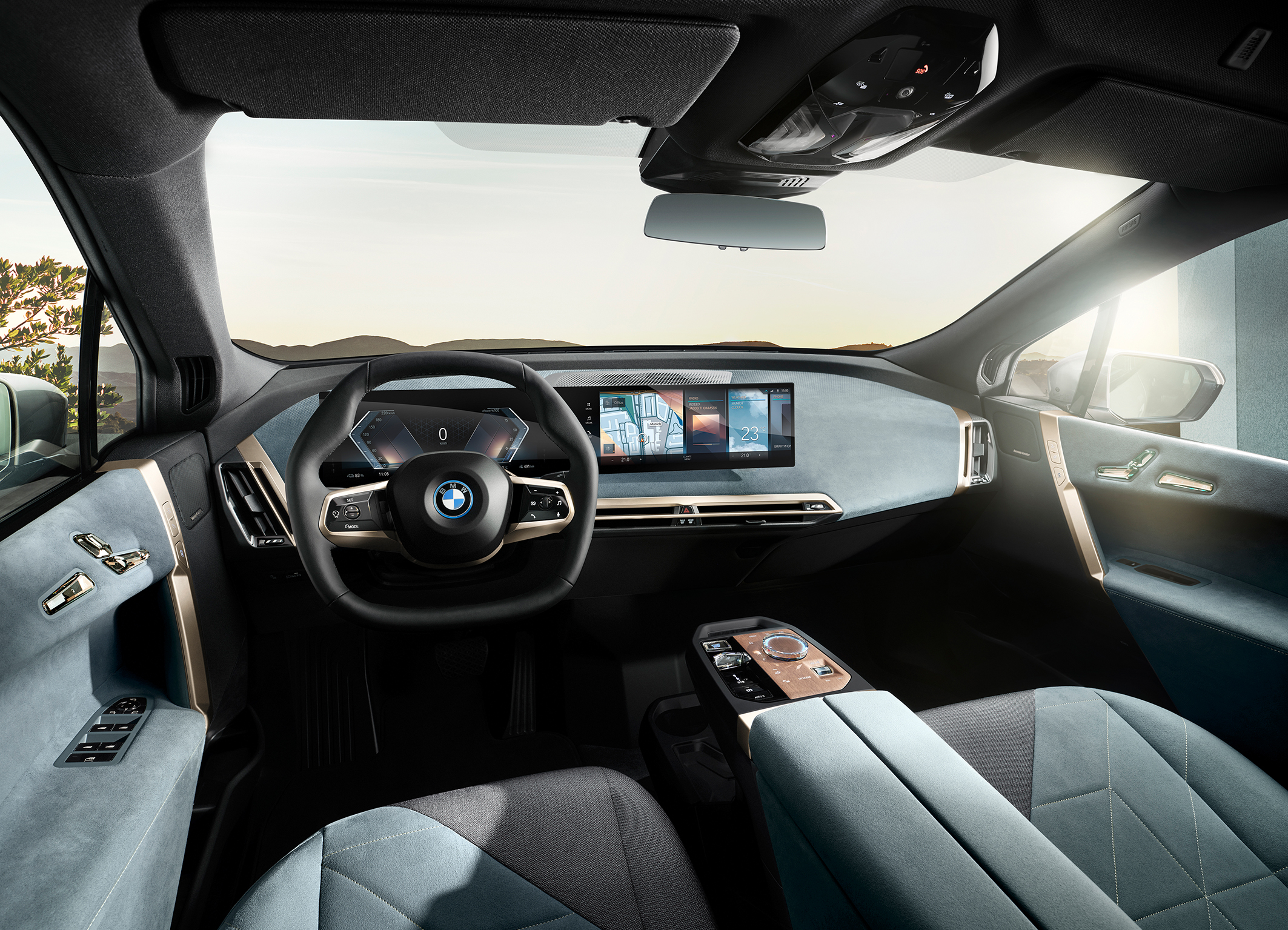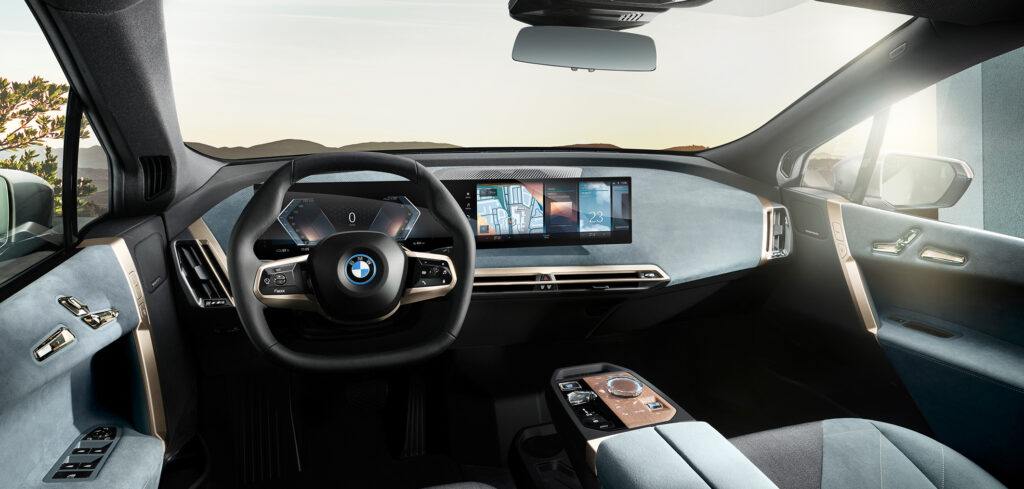Continental has detailed the systems it supplies to BMW for use in the interior of the marque’s iX EV. In response to ever-increasing vehicle digitalization, the iX integrates Continental’s Cockpit High Performance Computer. This manages the growing software complexity as well as the rapidly expanding functional scope in the cockpit. The computer also provides the necessary computing power for the functions in the Continental-supplied head-up display and the large-scale display landscape in the vehicle.
Continental has also provided BMW with ultra-wideband transceivers for digital vehicle access with smartphones, along with a smartphone terminal with close-range communication for inductive charging, the electronics for the Sky Lounge intelligent panoramic roof, and soft, low-emission surface materials.
“The user experience is becoming an increasingly important decision criterion for vehicle buyers. With our building blocks for an intuitive, safe, but above all attractive, interaction between the driver and the vehicle in the BMW iX, as well as our expertise in software development and systems integration, we help to promote sustainable mobility,” said Nikolai Setzer, the Continental CEO.
The electronics architecture in the BMW iX bridges the gap between today’s distributed approach to an integrated and centralized vehicle architecture of the future. Instead of relying on multiple electronic control units, BMW’s new EV concentrates the computing power of various functions in a few central computers. Continental’s cockpit domain controller is responsible for several software functions and centrally manages all input and output devices in the vehicle interior on a single electronic control unit. As such, it offers new opportunities to provide a consistent user experience throughout the vehicle.
The controller also merges functions from infotainment and instrumentation so that they can now be freely configured, allowing maximum personalization for drivers and passengers, and greater freedom in vehicle design. The central high-performance computer also opens the door for third-party apps and cloud services and supports hardware-independent software integration. Combined with the solution for over-the-air software updates, this creates timeliness and expandability for the cockpit.
This, says Continental, means that the cockpit and the human-machine interface are increasingly transforming from being a driver’s workplace to a multimodal space that adapts to the driver’s needs. This is particularly evident in the display system in the windshield and the integration of a driver camera in the curved display.
The head-up display projects all relevant information, such as speed, important warning messages and navigation arrows, in the direct field of vision of the driver. The driver camera in the instrument cluster of the BMW iX analyzes camera images of the driver’s head position, direction, eye opening and line of sight, ensuring that the driver is warned in the event of distraction from traffic or lack of attention due to fatigue.
With the control system for the Sky Lounge, Continental says it has made the panoramic roof intelligent. The large glass surface can be darkened electronically depending on the light conditions. Meanwhile, various surface materials, such as covers for the instrument panel, door balustrade and seats, use materials such as Continental’s Acella Lux, which has low-emission properties.




